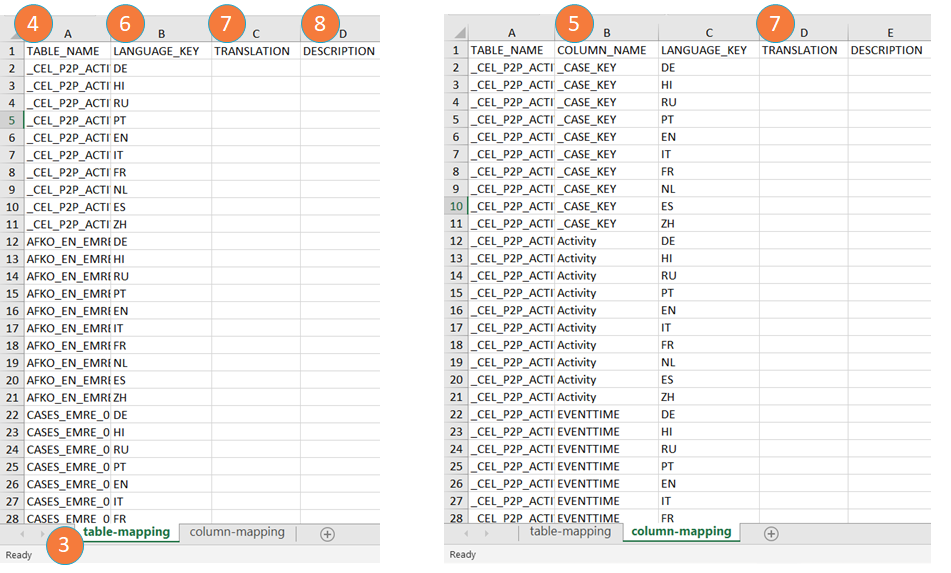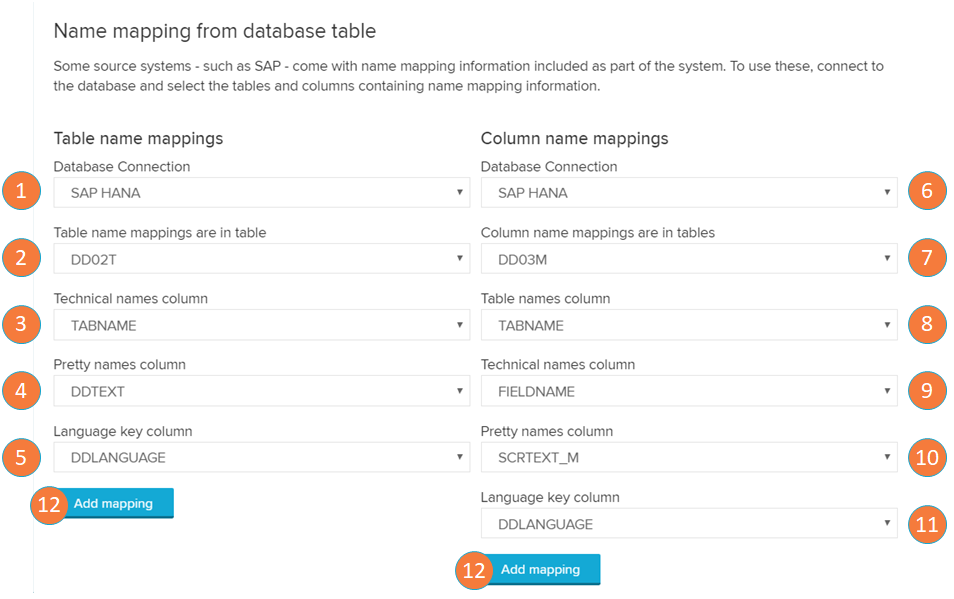The Name Mapping screen allows you to enable translations for technical and language specific terms to a user friendly format.
It is possible to use translation tables from databases or use an excel template and edit it on your local machine.
Toggle name mapping
- Name mapping status: Please click on the 'Name mapping status' toggle to activate/deactivate the name mapping in your analysis.
Once activated, you will need to configure the name mapping from the database or excel for it to function.
Name mapping from file
The name mapping provides the possibility to download a template for your current data model and its tables. In this template you can specify the desired translations for every technical name of your tables and columns.
- Download template: click on the download template button to store a xlsx file will on your local hard drive. Open this file in any table editor (for example, use Excel) to edit the name mapping (see 'Name mapping template' subsection below).
- Select file: upload here the template you edited to load the desired name mapping.
Name Mapping Template:
The downloaded name mapping template automatically comes with the name of the tables and columns in your analysis preloaded on it. To assign the desired name mapping, you only need to edit the 'Translation' column (item 7 of the 'table-mapping' and 'column-mapping' tabs).
Elements of the name mapping template
3. Table or Column mapping: switch between the 'table-mapping' (to assign table names) and 'column-mapping' (to assign column names) tabs.
4. Table Name: technical name of the table.
5. Column Name: technical name of the column.
6. Language Key: language of the translation to be inputted.
7. Translation: write here the desired name mapping.
8. Description: optional description of the column or table name.
Name mapping from Database Table
If the name mapping is successfully added:
It is possible to define a name mapping over a dictionary table in a database. On every data load of the data model the name mapping will be updated automatically and load all translations available to your data model's tables and its columns.
| Note | ||
|---|---|---|
| ||
Your dictionary table should include (at least) a column with technical table names (i.e. EBAN), a column with the translation (i.e. Purchase Requisition) and a column for the language key (i.e. E for english). For SAP databases, the name mapping follows by default the example displayed on this section. |
To apply the name mapping for table names from a database table, use the dropdown-menus. It is recommended to start with the table name mappings and then proceed to the column name mappings.
- Table name - Database connection: select database for the table names.
- Table name - Table selection: select table that contains the table names.
- Table name - Technical names column: select the column that contains the table's technical names.
- Table name - Pretty names column: select the column that contains the new desired table names.
- Table name - Language key column: select the column that contains language of the new table names.
Column name - Database connection: select database for the column names.
Column name - Table selection: select table that contains the column names.
Column name - Table names column: select the column that contains the table's technical names.
Column name - Technical names column: select the column that contains the column's technical names.
Column name - Pretty names column: select the column that contains the new desired column names.
Column name - Language key column: select the column that contains language of the new column names.
- Add mapping: add table name or column mapping.




